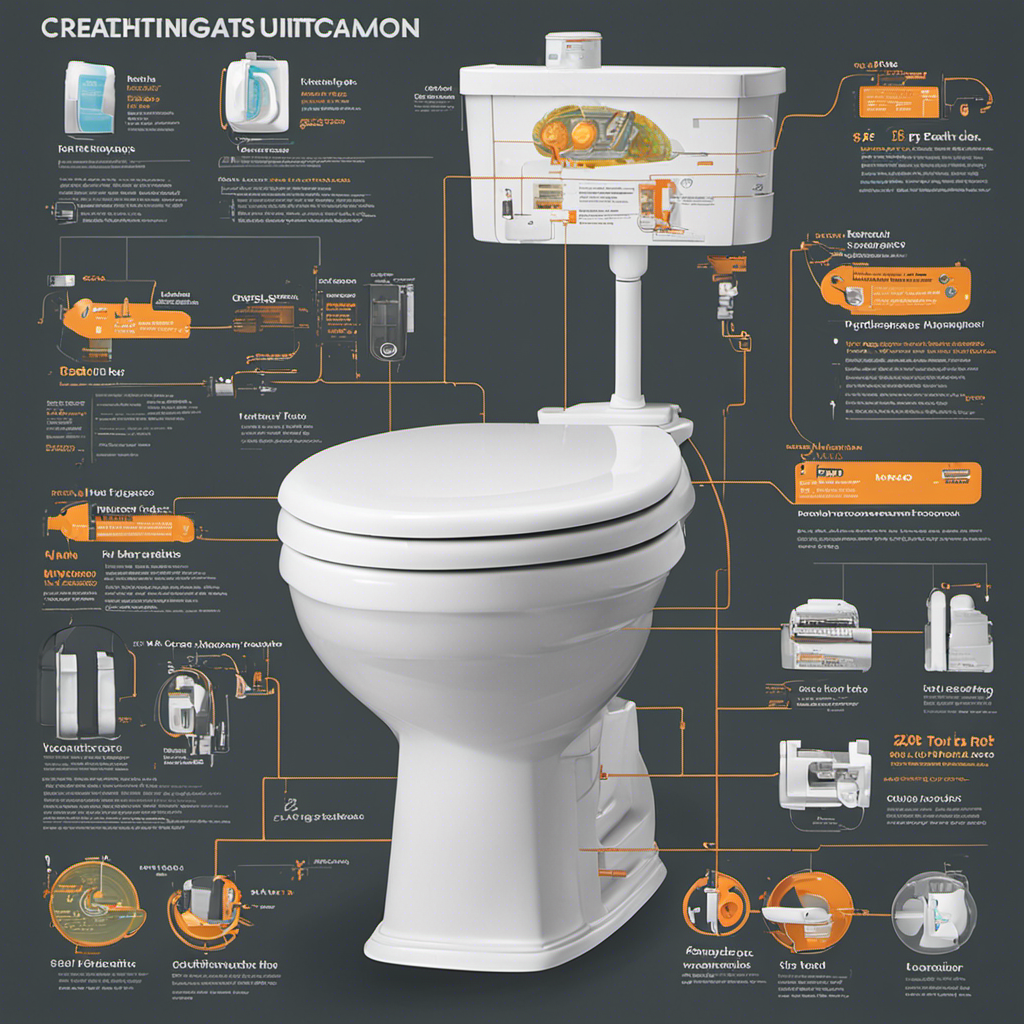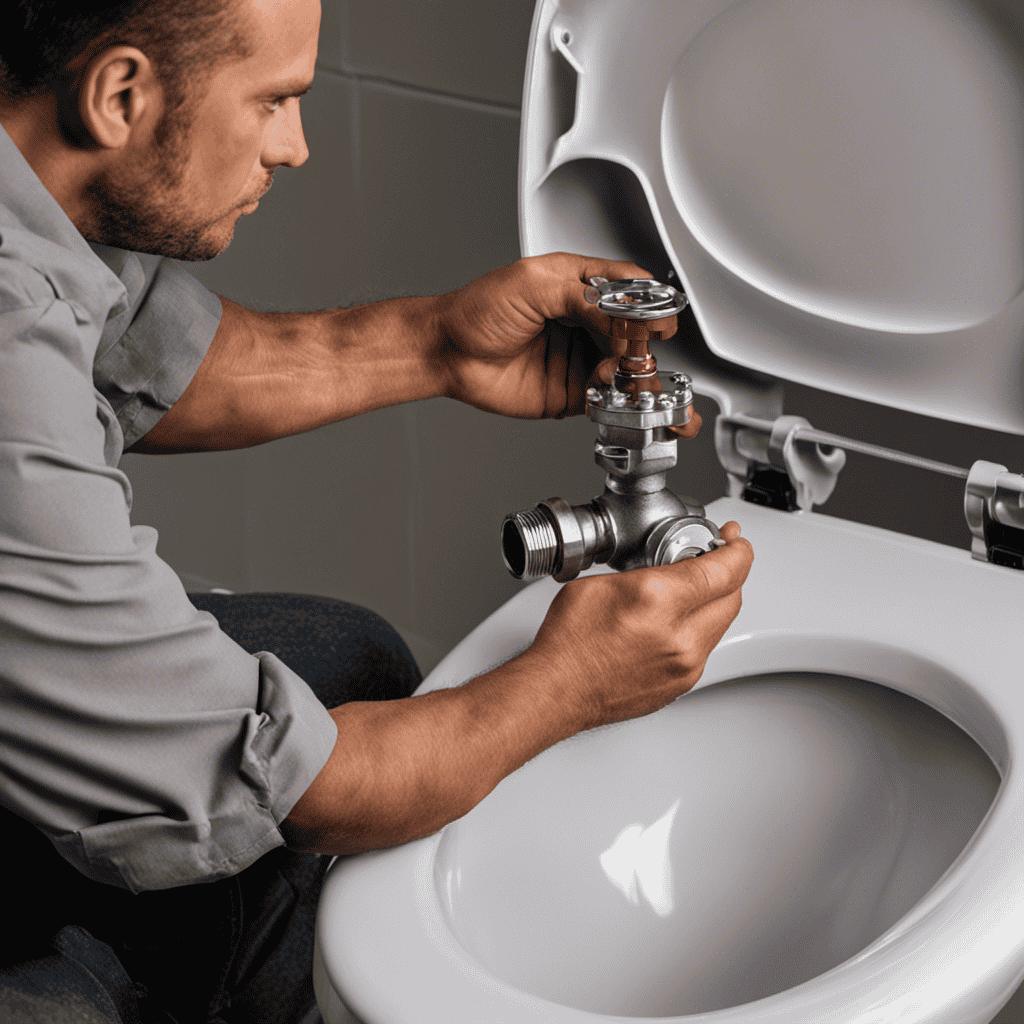Hey there! Ever wondered how long your toilet wax ring can really hold up? Well, I’ve got all the answers you need.
In this article, I’ll dive into the factors that affect the lifespan of a wax ring, the telltale signs of a failing one, and the proper maintenance techniques to extend its lifespan.
Oh, and don’t worry, I’ve also got a step-by-step guide on how to replace a wax ring when the time comes.
So let’s get started and keep your bathroom running smoothly!
Key Takeaways
- The lifespan of a toilet wax ring can vary from 10 to 20 years.
- Regular inspection is crucial to identify wear or damage to the wax ring.
- Common signs of a failing wax ring include water leakage, unpleasant odors, and loose bolts.
- Proper maintenance, such as regular cleaning and avoiding harsh chemicals, can help extend the lifespan of a wax ring.
Factors Affecting Wax Ring Lifespan
Toilet wax ring lifespan can be affected by several factors, such as how often you use the toilet and how well you maintain it.
The main causes of wax ring deterioration are frequent usage and improper maintenance. When you use the toilet frequently, the wax ring is continuously compressed, which can lead to wear and tear over time. Additionally, if you don’t properly clean and maintain the toilet, debris and buildup can accumulate around the wax ring, causing it to deteriorate faster.
To prevent wax ring leaks and extend its lifespan, there are a few key ways to take care of it. First, ensure that the toilet is securely fastened to the floor to avoid unnecessary movement and pressure on the wax ring. Regularly inspect and clean the toilet to remove any debris or buildup that could cause damage. Finally, avoid using harsh chemicals or abrasive cleaners that can degrade the wax ring.
Signs of a Failing Wax Ring
The telltale signs of a failing wax ring include water leakage and unpleasant odors. If you notice any of these warning signs, it’s important to take action immediately to prevent further damage. Here are some DIY troubleshooting tips to help you address the issue:
- Inspect the area around the base of the toilet for any signs of water pooling or seepage.
- Check for any foul odors coming from the bathroom, as this could indicate a wax ring failure.
- Look for any visible cracks or damage to the wax ring itself.
- Tighten the bolts securing the toilet to the floor, as loose bolts can contribute to wax ring failure.
- Consider using a dye test to detect any hidden leaks that may be causing the problem.
By addressing these warning signs promptly, you can prevent costly repairs and extend the lifespan of your wax ring.
Now, let’s explore proper maintenance techniques to help you achieve just that.
Proper Maintenance for Extending Wax Ring Lifespan
Regular maintenance is essential for prolonging the life of your wax ring. By following these toilet wax ring maintenance tips, you can ensure that your toilet remains leak-free and functional for years to come. However, it is important to avoid common mistakes with wax ring care that can lead to premature failure.
Here are some key maintenance tips to keep in mind:
| Maintenance Tips | Frequency | Actions |
|---|---|---|
| Inspect for leaks | Monthly | Check for any signs of water leakage around the base of the toilet. |
| Clean regularly | Weekly | Clean the toilet bowl and surrounding areas to prevent buildup of debris and bacteria. |
| Replace every 5 years | Every 5 years | Replace the wax ring to prevent deterioration and maintain a proper seal. |
Replacing a Toilet Wax Ring: Step-by-Step Guide
When replacing your wax ring, it’s important to follow these step-by-step instructions to ensure a proper seal and prevent any potential leaks.
Here’s a precise guide on how to install a toilet wax ring:
-
Remove the toilet: Start by shutting off the water supply and flushing the toilet to empty the tank. Disconnect the water supply line and remove the bolts securing the toilet to the floor.
-
Clean the flange and toilet base: Thoroughly clean the flange and toilet base to remove any old wax residue or debris.
-
Position the new wax ring: Place the new wax ring on the flange, ensuring it is centered and level.
-
Reinstall the toilet: Carefully lower the toilet onto the wax ring and align it with the bolts. Press down firmly to compress the wax ring and create a tight seal.
-
Secure the toilet: Reattach the bolts, reconnect the water supply line, and turn on the water. Test for any leaks.
By following these steps, you can avoid common mistakes in replacing a wax ring and achieve a proper installation.
Now, let’s address some frequently asked questions about the lifespan of a toilet wax ring.
Frequently Asked Questions About Toilet Wax Ring Lifespan
Now let’s answer some common questions about how often you should replace a toilet wax ring.
The lifespan of a toilet wax ring can vary depending on various factors such as usage, maintenance, and quality of the product. Generally, a well-installed and properly maintained wax ring can last anywhere from 10 to 20 years.
It is important to note that regular inspection is crucial to identify any signs of wear or damage. Common problems with wax rings include leaks, foul odors, and loose toilets. If you notice any of these issues, it is recommended to replace the wax ring promptly to prevent further damage and ensure a proper seal.
Regular maintenance and prompt replacement when necessary will help extend the lifespan of your toilet wax ring.
Frequently Asked Questions
Can Using a Certain Type of Toilet Cleaner Affect the Lifespan of a Wax Ring?
Using a certain type of toilet cleaner can affect the lifespan of a wax ring. Harsh chemicals or acidic cleaners can deteriorate the wax, causing it to break down faster. Water hardness can also impact durability.
Are There Any Specific Toilet Models or Brands That Require More Frequent Wax Ring Replacements?
Toilet wax ring compatibility is crucial when choosing the right wax ring for your toilet. Some toilet models or brands may require more frequent wax ring replacements due to variations in design and flushing power.
Can a Wax Ring Be Reused if It Is Still in Good Condition After Removing the Toilet?
If a wax ring is in good condition after removing the toilet, it can be reused. However, I recommend replacing it to ensure a proper seal. Alternatively, there are alternative sealing methods available.
Is It Necessary to Hire a Professional Plumber to Replace a Wax Ring, or Can It Be Done as a DIY Project?
Replacing a wax ring can be done as a DIY project, but it’s essential to follow a step-by-step guide. Hiring a professional plumber is not necessary if you have the right tools and knowledge.
Can a Wax Ring Be Damaged if the Toilet Is Constantly Being Moved or Shifted?
Constantly moving or shifting a toilet can damage the wax ring, which may lead to leaks. To prevent this, ensure proper installation and avoid unnecessary toilet movements. Regular maintenance and inspections can help identify any potential issues.
Conclusion
In conclusion, the lifespan of a toilet wax ring can vary depending on several factors. However, with proper maintenance and regular inspection, you can extend its lifespan significantly.
Remember to look out for signs of a failing wax ring, such as water leakage or foul odors.
By promptly replacing the wax ring when necessary, you can avoid potential damage and costly repairs.
So, take the necessary steps to ensure your toilet’s wax ring is in good condition, and enjoy a worry-free bathroom experience.










